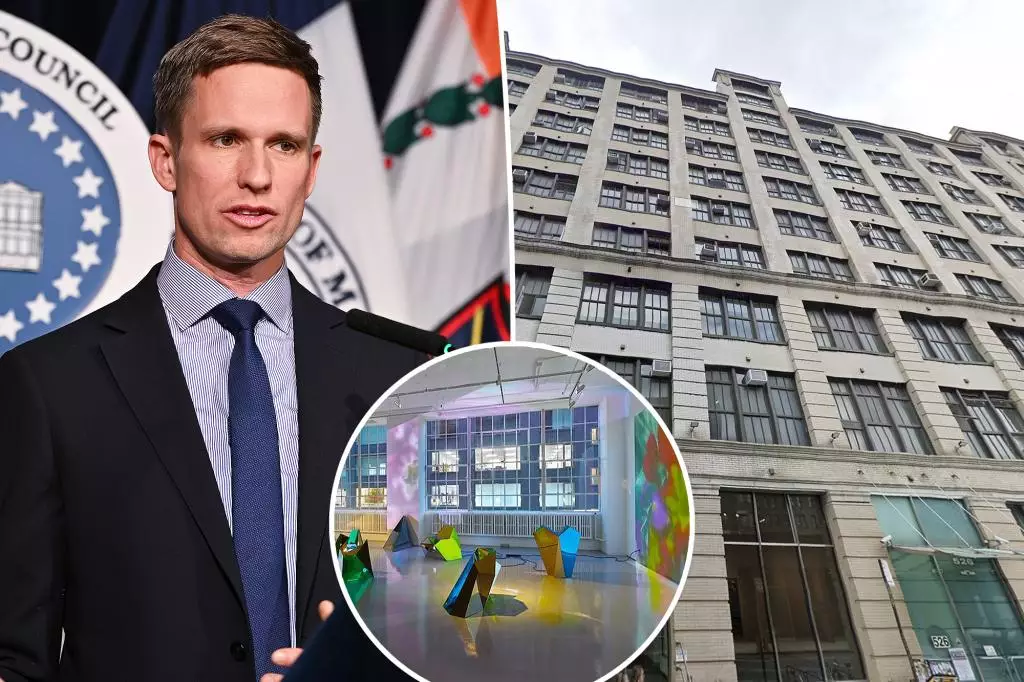The West Chelsea Arts Building, a vibrant creative hub, faces an uncertain future as it has been listed for sale by the estate of its late benefactor, Gloria Naftali. This 400,000-square-foot facility, located at 508-534 West 26th Street, was established in 1993 with a mission to provide affordable studio space for artists and galleries. Over the years, it has become a sanctuary for renowned artists including Ross Bleckner and Louise Fishman, shaping New York City’s artistic landscape. However, with its recent listing at $170 million, there is growing anxiety among tenants and local leaders about the potential ramifications of this sale.
As news of the building’s sale spread, local officials quickly rallied to voice their concerns. City Council member Erik Bottcher, US Representative Jerry Nadler, and several other local representatives have formally urged the Raymond and Gloria Naftali Foundation to reconsider the sale in light of its immense cultural importance. This urgency is underscored by the apprehension of nearly 200 tenants, many of whom have cultivated long-standing connections within the community. The letter from local leaders emphasizes the risk of displacement for these artists who depend on affordable studio space to sustain their livelihoods.
Bottcher’s observations reveal that many tenants are living in a state of anxiety, fearing that the foundation may prioritize profit over the needs of its tenants. With the rising affordability crisis threatening the very essence of New York’s artistic community, the potential loss of this hub cultivates an atmosphere of despair among those who rely on it.
Gloria Naftali’s commitment to fostering the arts was profound. Although her last will expressed a desire for the building to primarily continue serving as artist studios and galleries, it did not impose a legal obligation to maintain this use. This lack of enforceable guidelines raises significant concerns about how forthcoming owners might approach the future of the building. Local leaders have requested a meeting with the foundation to explore alternatives that could preserve the unique character of the space while also seeking to amplify the voices of current tenants in any negotiations or decisions that may arise.
The artists and galleries housed within the building include significant cultural players like Green Naftali Gallery and Fergus McCaffrey. Their presence illustrates the building’s essential role in the art ecosystem of New York City. Bottcher’s assertion regarding the city’s long history as a haven for artists highlights the broader implications of losing such cultural sites amidst soaring real estate prices and a relentless push towards gentrification.
From a financial standpoint, Derek Wolman, an attorney for Naftali’s estate, has articulated the struggles faced by the foundation in managing the building’s upkeep. The assertion that the foundation lacks sufficient funds to maintain the property raises questions about potential management strategies that could allow for a sustainable model focused on supporting the arts, rather than outright sale. This perspective invites consideration of other avenues, such as partnerships with nonprofit organizations dedicated to the arts that could retain the character of the space while alleviating the financial burdens on the foundation.
While Wolman assures that immediate leases are not at risk, the uncertainty surrounding the eventual ownership of the property lingers heavily over the art community. The market for such prominent real estate often attracts deep-pocketed buyers whose interests may not align with the foundational mission that Naftali envisioned.
The current situation of the West Chelsea Arts Building serves as a microcosm for the ongoing struggle within New York City regarding the balancing act between real estate development and cultural preservation. As local leaders, artists, and community members unite to advocate for the protection of this vital resource, the larger implications of their fight cannot be overlooked. The outcome of this campaign will not only determine the fate of the building but will also send a resounding message about the city’s commitment to preserving its artistic heritage amidst a climate of rapid change and escalating costs.
In a city renowned for its creativity and artistic spirit, it is imperative to safeguard spaces that foster innovation and community. The voices of those affected must be amplified, and the preservation of the arts should remain a priority in the ongoing dialogue about the future of New York City.
